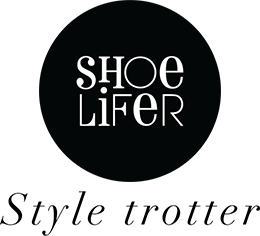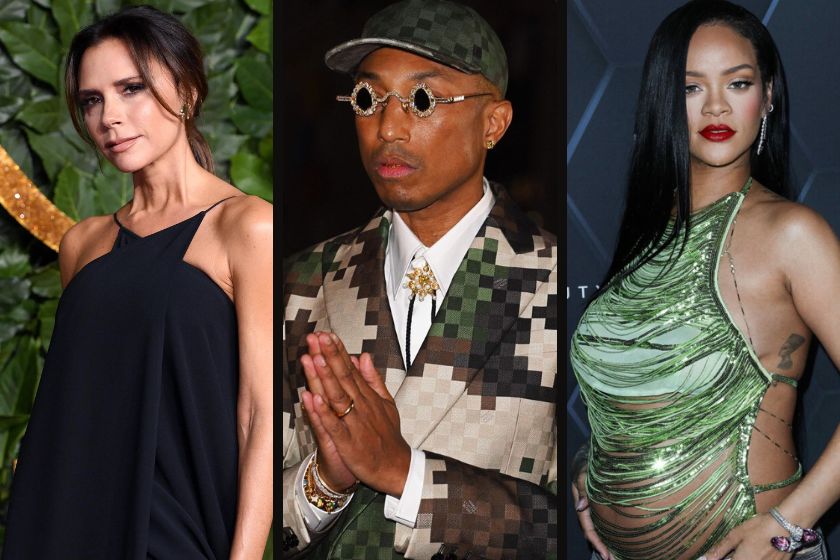The arrival of Pharrell Williams at Louis Vuitton is the ultimate symbol of celebrities infiltrating fashion – an otherwise ultra-exclusive world. Why, how, and does it always work? Shoelifer explains it all.
Victoria Beckham, Rihanna, Beyoncé, Kanye West, Aya Nakamura… There are a countless stars involved in fashion, collaborating with luxury brands or creating their own. While the phenomenon is not new, it reached its peak on February 14th with the appointment of Pharrell Williams as “Men’s Creative Director” at Louis Vuitton.
From Luxury to Entertainment
The Afro-American star and forever young Pharrell was (partly) chosen to perpetuate the luxury and streetwear legacy of the late Virgil Abloh. On June 20th, during the Paris Men’s Fashion Week Spring/Summer 2024, Pharrell Williams was expected as a fashion messiah.
His first show, titled “LOVERS,” was held on the Pont Neuf in the French capital (a first), and took place in front of a crowd of stars (Beyoncé, Rihanna, DiCaprio). Renowned designers (Nicolas Ghesquière, Jonathan Anderson, Nigo, Stefano Pilati) also attended. As if that weren’t enough, there was also a performance by rapper Jay-Z — more than enough to electrify the crowd. The press was ecstatic, describing the event as a “monumental show,” “legendary,” the “epitome of style,” and “Pharrell’s conquest of Paris.”
The entertainer ticked all the boxes for a flawless performance. He revolutionized the luxury world, focusing on pure entertainment and pop culture marketing. In terms of substance, the multifaceted artist has chosen security. He has reaffirmed Vuitton’s conventions while betting on the trinity of streetwear, military aesthetics, and high fashion (all chic and high quality pieces).
The Halo Effect
While men’s fashion accounts for only 5% of Vuitton’s sales, Pharrell Williams’ arrival could have a halo effect on the entire brand that is already doing very well (over $20 billion in revenue in 2023). Pharrell Williams is a pioneer of the star fashion phenomenon. In 2006, he made his first foray into this world by designing the Millionaire sunglasses for Vuitton. He went on to collaborate with Moncler, Uniqlo, Adidas, Chanel, and even Tiffany & Co. However, he has never led his own initiative or conceived a collection entirely on his own. But that’s not what the LVMH group expects of him. Pharrell Williams is there to represent a brand, not a profession (that of an artistic director).
Another Move by Millennials and Gen Z
The rise of celebrities in fashion is a trend embraced by Millennials. According to a study by the Boston Consulting Group (BCG), star/luxury brand collaborations have reached a 90% recognition rate among “young” people (aged 15-35). This study, conducted for Altagamma, reveals that 50% of luxury consumers buy at least one piece from such collaborations. The rate rises to 67% among Gen Z and 60% among millennials, especially young Chinese consumers.
As for the prevalence of hip-hop stars in fashion (Kanye West, Asap Rocky, Migos…), it is primarily a marriage of convenience. On one hand, the world of hip-hop has never hidden its fascination with the world of luxury and bling since the 1990s. On the other hand, from the 2000s, this musical movement transitioned from a “subculture” to pop culture. Everyone listens to hip-hop and its pop derivatives.
In other words, it’s bankable. That’s why Givenchy made Aya Nakamura its ambassador. It’s a pragmatic union. Moreover, fashion has always had the ability to assimilate all subcultures (shoutout to rock, grunge, and punk).
The Fenty Flop
However, this marriage of convenience doesn’t always work. In the saga of stars in fashion, consider Rihanna and her brand Fenty. In 2019, international icon Riri became the first black woman to launch a luxury brand (Fenty) within the LVMH group — bold move for the company’s corporate social responsibility (CSR) profile! But it flopped.
Why? A disconnect between the prices (€230 for a T-shirt, €700 for jeans) and the purchasing power of millions of the singer’s fans. Plus, there were no well-known ambassadors and the aesthetic was too derivative, borrowed from Virgil Abloh, Victoria Beckham, and Marine Serre. Consequently, not even an icon like Rihanna could carry the brand on her shoulders. As a result, LVMH suspended the ready-to-wear brand two years later.
In contrast, Savage X Fenty (lingerie and sportswear) and Fenty Beauty (cosmetics), also backed by LVMH, have been a hit. In 2021, Savage X Fenty was already valued at over a billion dollars. The difference? Attractive prices and promotions, not to mention ambassadors (Rosalia, Megan Thee Stallion). Also, it stood for something: diversity, inclusion, and body positivity. And for that matter, everyone is banking on Riri, with Pharrell Williams having made her one of his muses.
Beyoncé’s Case
But beware, stars in fashion don’t always work. The most striking example is Beyoncé, aka Queen B. In 2008, the superstar launched the House of Dereon brand with her mother, Tina (a part-time stylist). It was a flop. In 2016, Beyoncé created her sportswear brand, Ivy Park, before partnering with Adidas in 2018.
Ivy Park never took off. In 2023, its sales even dropped by 50%, according to the reputable Wall Street Journal. Consequently, Beyoncé took back control and terminated her partnership with Adidas. The German sportswear giant had already been burned by the loss of millions of dollars after the Yeezy fiasco (thanks a lot, Kanye West). Why didn’t it work? Lack of originality and a misguided approach, according to Adidas’ own admission. Furthermore, Beyoncé never wore her brand (outside of photoshoots). And she has never been a fashion trendsetter; she is more of a “follower,” unlike Rihanna, who even made the mohawk glamorous.
Still skeptical? The editorial team invites you to watch this fabulous demonstration by Music Feeling (a specialist in the hip-hop industry).Not to mention that too many collaborators spoil the collaboration.
The Correct Approach and Being Sincere
So, what should we remember about stars in fashion? Well, it’s not enough to be a star; you must also stand for something. It doesn’t necessarily have to be something profound. Kim Kardashian’s Skims underwear brand is worth over $1.6 billion. Why? Because many women want to have the star’s plump derriere and voluptuous hips (even if they are not natural). Earlier this year, Kim K was even invited to Harvard to discuss her business.
Sincerity and hard work also pay off. Consider Victoria Beckham and her eponymous brand (with 400 points of sale). The former Spice Girl and footballer’s wife took 15 years to become a recognized stylist respected by her peers. Despite encouragement from Marc Jacobs and Roland Mouret in the early 2000s, she had a catastrophic start. Today, her more sober and minimalist style has prevailed. Even Vogue recognizes it. However, rumors suggest she is facing serious financial problems. So, stars in fashion aren’t always such a good idea.


